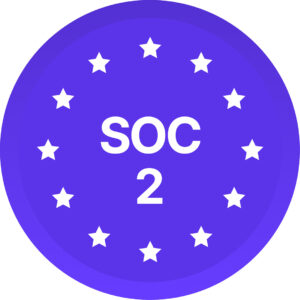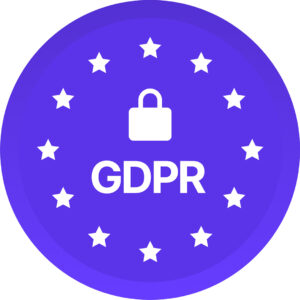Multiculturalism is more than just a concept; it’s a celebration of diverse cultural identities within a unified society. It encompasses equal rights and opportunities and recognizes every cultural or racial group. Canadian Multiculturalism Day on June 27th is an opportune time to reflect on the richness and strength brought by the many cultural communities that shape a strong and vibrant Canadian society.
In Canada, the notion of being a “multicultural society” can be understood in various ways— descriptively (as a sociological fact), prescriptively (as ideology), or politically (as policy). As a sociological fact, multiculturalism acknowledges the presence of individuals from diverse racial and ethnic backgrounds. Ideologically, it embraces a coherent set of ideas and ideals that celebrate the country’s cultural diversity. At the policy level, it involves managing diversity through formal initiatives across different levels of governance (federally, provincially/territorially and municipally).
With a history shaped by settlement and colonization, Canada stands as a multicultural society comprising not only its three founding peoples—Indigenous, French, and British—but also countless other racial and ethnic groups who have contributed to its tapestry.
This article aims to delve into the various dimensions of multiculturalism, including its impact in the workplace, common challenges, and benefits, while providing personal insights into the experiences of immigrants in Canada.
Multiculturalism in Daily Life
As an immigrant from Latin America, I recently became a Canadian citizen, making this day even more meaningful. Canada’s multiculturalism creates a welcoming and accepting environment where diverse cultures thrive. Interactions between cultures have taught me the importance of open-mindedness, understanding, and celebrating our differences. I’ve also discovered the joy of exploring new countries, cuisines, festivals, and music, all within the multicultural tapestry of Canada.
In general, my culture was not lost when I moved to Canada. Thanks to the Multiculturalism Act (an act for preserving and enhancing multiculturalism in Canada passed in 1988), I am encouraged to practice it. This is what makes this country so prosperous: the diversity of its people.
Cultural Diversity in the Workplace
Creating a diverse workforce is crucial for modern companies. Studies show that a diverse workplace attracts top talent, enhances problem-solving capabilities, and improves employee satisfaction. However, diversity alone is not enough; inclusion is key. Inclusive environments foster equity, allowing individuals from diverse backgrounds to participate fully and develop their skills. Recognizing the value of diversity and fostering an inclusive culture leads to stronger teams and better business outcomes.
This was especially important for me when I moved to Canada. According to a September 2021 survey from Glassdoor, 76 percent of employees and job seekers said a diverse workforce was important when evaluating companies and job offers. Nearly half of Black and Hispanic employees and job seekers said they quit after witnessing or experiencing workplace discrimination. And 37 percent of employees and job seekers said they wouldn’t apply to a company with negative satisfaction ratings among people of colour
Benefits
A culturally diverse workplace empowers people to develop their talents and skills. Different ideas allow new learning for the team. Cross-cultural teams perform better at problem-solving tasks and bring a wider range of capabilities to the table.
Cultural diversity encourages personal growth, promotes innovative thinking, and makes organizations more appealing to global candidates. Employees build stronger connections and feel truly valued and heard by engaging in conversations about backgrounds and cultures, leading to increased collaboration and engagement.
Challenges & Strategies
Creating a culturally diverse workplace comes with its own challenges, particularly regarding communication styles influenced by different cultures. However, strategies exist to overcome these hurdles and foster an inclusive environment.
- Seek advice from D&I professionals:
If you lack experience in developing a workplace diversity strategy, it is important to consult professionals in diversity and inclusion (D&I). Their expertise can provide valuable guidance and insights. Additionally, partnering with organizations overseeing diversity progress can offer data, testimonials, and tools to shape effective actions.
- Conduct training and courses:
Organize training or courses within the company to address doubts and facilitate open discussions on multiculturalism. Encourage employees to share their suggestions and concerns. The more involvement and understanding among employees, the better the outcomes.
- Recognize holidays and traditions:
Promote inclusivity by recognizing and respecting the holidays and traditions of diverse religions and cultures. This sends a message of inclusiveness and fosters a sense of belonging for all employees.
- Establish employee resource groups:
Encourage the formation of employee resource groups that provide a platform for individuals from different cultures and backgrounds to connect, share experiences, and support one another. These groups can help create a supportive network within the company.
- Embrace feedback:
Create a culture of openness and actively listen to the feedback and concerns of your employees. Understand their needs and aspirations to ensure your efforts go beyond meeting diversity quotas. This ongoing dialogue will guide continuous improvement and fine-tuning of policies and practices.
By addressing the challenges and implementing these strategies, organizations can build a culturally diverse and inclusive workplace that values the contributions and perspectives of all employees.
Canadian Multiculturalism Day reminds us of the strength and vibrancy that diversity brings to our society. By embracing multiculturalism in our personal lives and workplaces, we create an environment where everyone feels valued, heard, and empowered. Let us continue to celebrate and foster inclusivity, diversity, and equity as we build a better Canada together.
Please contact us if you are struggling with any of these challenges or need support in creating a more inclusive environment to reflect Canada’s Multicultural tapestry better.
__________
References
The Canadian Encyclopedia. (n.d.). Multiculturalism. Retrieved from https://www.thecanadianencyclopedia.ca/en/article/multiculturalism
Glassdoor. (n.d.). Diversity, Equity & Inclusion Resources. Glassdoor Employers. Retrieved from https://www.glassdoor.com/employers/resources/diversity-equity-inclusion/
Understanding Canadian Multiculturalism: Government of Canada. (n.d.). Understanding Canadian Multiculturalism. Retrieved from https://www.canada.ca/en/canadian-heritage/campaigns/celebrate-canada/multiculturalism-day.html
Challenges of Cultural Diversity in the Workplace: Society for Human Resource Management (SHRM). (n.d.). Challenges of Cultural Diversity in the Workplace. Retrieved from https://www.shrm.org/resourcesandtools/hr-topics/employee-relations/documents/26078_pt2.pdf
How to Build an Inclusive Workplace: Mosley, E. (2019, October 17). How to Build a More Inclusive Workplace Culture. Forbes. Retrieved from https://www.forbes.com/sites/ericmosley/2019/10/17/how-to-create-a-more-inclusive-workplace-culture/?sh=2f40e65167bd
This blog by Oscar Andrade was originally published by Diversio EDU (formerly CCDI Consulting) in June 2023.
Our newsletter and blogs feature personal opinions and diverse viewpoints. We aim to create a safe space for our team to share their perspectives on diversity and inclusion. Please note that individual articles may not align with every reader’s view or comprehensively cover a topic. We appreciate the diversity of opinions and respect our team’s contributions.

